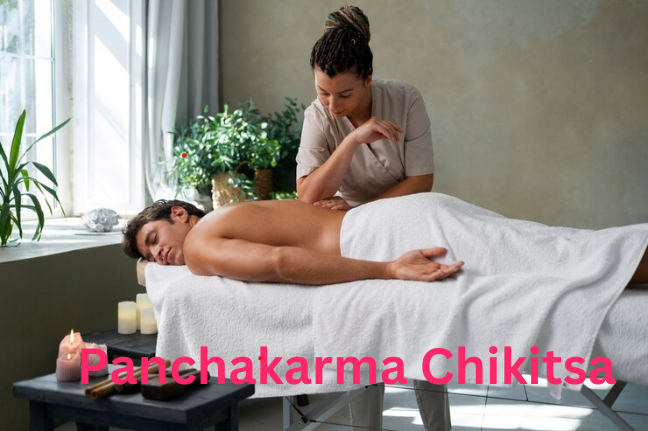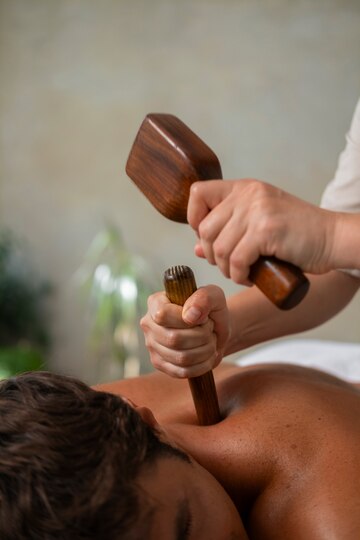
Panchakarma Chikitsa
There is a subtle resurgence of interest in traditional healing practices in a society where modern medicine frequently rules the discourse on healthcare. Panchakarma Chikitsa, a keystone of Ayurveda, the traditional Indian medical system, is one such technique that is becoming more and more popular. We will explore the fundamentals, practices, and significant effects of Panchakarma Chikitsa on holistic wellbeing as we delve into its depths in this blog.
Understanding Panchakarma Chikitsa
Sanskrit-derived panchakarma means “five actions” or “five treatments,” whereas Chikitsa is the word for therapy. Panchakarma Chikitsa is a collection of rejuvenation and detoxification treatments that work to bring the body, mind, and spirit back into harmony. This age-old discipline, which has its roots in Ayurvedic medicine, sees health as a condition of balance between the three doshas—Pitta, Kapha, and Vata.
The Five Actions of Panchakarma
Vamana (Therapeutic Emesis): This procedure includes controlled vomiting in order to get rid of extra Kapha in the stomach and upper respiratory tract. People with allergies, skin issues, and respiratory ailments will benefit from it the most.
Virechana (Purgation Therapy): Virechana uses controlled purgation to cleanse the liver and intestines. It is advised for people with skin conditions, liver problems, and digestive problems as it helps balance the Pitta dosha.
Basti (Enema Therapy): To balance Vata dosha and cleanse the colon, basti includes injecting oils and herbal decoctions into the rectum. People with neurological diseases, arthritis, and chronic constipation can benefit from it.
Nasya (Nasal Administration): To facilitate mental clarity and unclog nasal passageways, Nasya practitioners inject herbal oils or powders directly into their noses. It is particularly helpful for neurological conditions, migraines, and sinusitis.
Raktamokshana (Bloodletting Therapy): Raktamokshana uses methods such as venesection or leech therapy to extract poisons from the blood in order to detoxify it. It can help control inflammatory illnesses, high blood pressure, and skin issues.
The Holistic Benefits of Panchakarma Chikitsa
Detoxification: Panchakarma Chikitsa promotes detoxification at the cellular level by assisting the body in removing accumulated toxins. The organs and tissues are revitalised during this cleaning process, which also raises vitality and energy levels.
Balanced Doshas: Panchakarma brings the body’s inherent constitution back into balance by addressing the underlying cause of dosha imbalances.Maintaining optimal health and preventing illnesses depend on this balance.
Stress Reduction: Panchakarma Chikitsa’s all-encompassing method not only treats physical illnesses but also fosters mental and emotional health. Stress, anxiety, and insomnia are lessened by the relaxation methods and therapies used.
Better Digestion: Panchakarma strengthens the digestive fire (Agni) and encourages appropriate nutrition absorption with treatments like Virechana and Basti. This promotes a healthy gut ecosystem by improving digestion, absorption, and excretion.
Long-lasting outcomes: By addressing the underlying cause of ailments rather than only treating their symptoms, Panchakarma Chikitsa ensures maintained wellbeing and long-lasting outcomes.

Conclusion
Panchakarma Chikitsa provides a holistic approach to health and healing and is a monument to the ageless wisdom of Ayurveda. This age-old therapy offers hope to anyone seeking comprehensive well-being in a society plagued by stress, pollution, and lifestyle illnesses. Individuals can embark on a transforming path towards maximum health, vitality, and longevity by adopting the principles of Panchakarma. Thus, why not start your journey towards rejuvenation right now and discover the potent healing properties of Panchakarma Chikitsa.
Faq
1. What is Panchakarma Chikitsa?
A holistic detoxification and rejuvenation treatment, Panchakarma Chikitsa has its roots in the age-old Indian medical tradition known as Ayurveda. It entails five purification techniques designed to bring the body, mind, and spirit back into harmony.
2. Who can benefit from Panchakarma Chikitsa?
Everyone can benefit from Panchakarma Chikitsa, regardless of age or background. Those who suffer from respiratory ailments, digestive difficulties, skin conditions, stress-related disorders, or chronic health issues may find it very beneficial. It is imperative that you speak with a licenced Ayurvedic practitioner to find out if Panchakarma is appropriate for your unique circumstances.
3. How long does a Panchakarma treatment typically last?
Depending on the patient’s unique needs, the degree of imbalances, and the practitioner’s suggestions, the length of a Panchakarma therapy can vary. A full Panchakarma programme typically takes a few days to many weeks to complete. Therapy length and intensity are tailored according to doshic imbalance, general health, and therapeutic objectives.
4. Is Panchakarma Chikitsa safe
Panchakarma Chikitsa, when delivered by a certified Ayurvedic practitioner, is thought to be safe and beneficial. But it’s imperative that you receive Panchakarma under the supervision of a qualified expert who can customise the treatment to your unique requirements, track your development, and guarantee your safety at every stage.
5. Are there any side effect of Panchakarma Chikitsa?
Even while panchakarma is usually well tolerated, some people may have brief adverse effects during or after the treatment, such as headaches, minor fatigue, or changes in bowel movements. These side effects usually go away when the body rebalances itself and are frequently a part of the body’s normal detoxification process. Throughout the treatment, it’s critical to let your Ayurvedic practitioner know about any worries or discomfort you may be experiencing.
